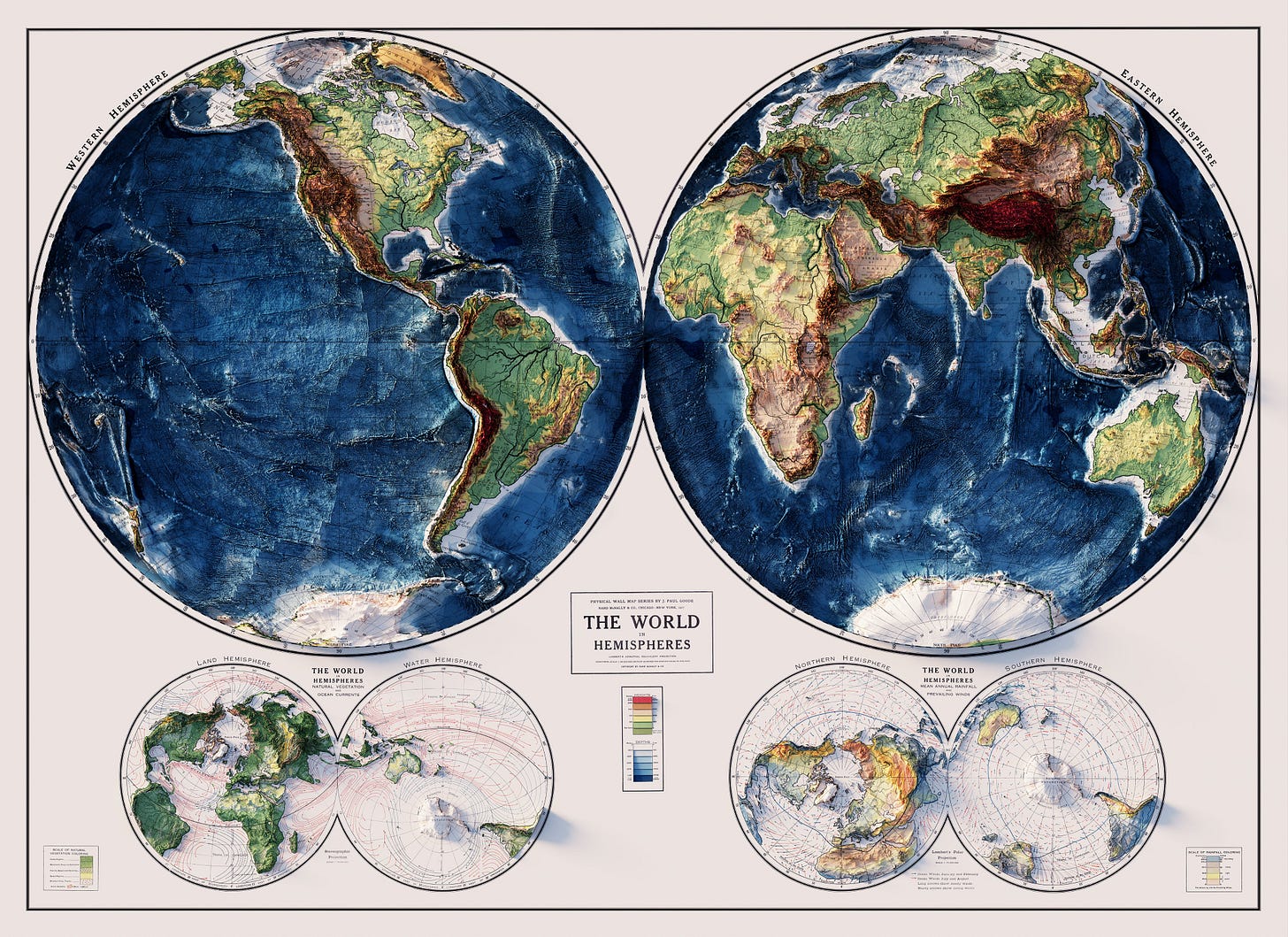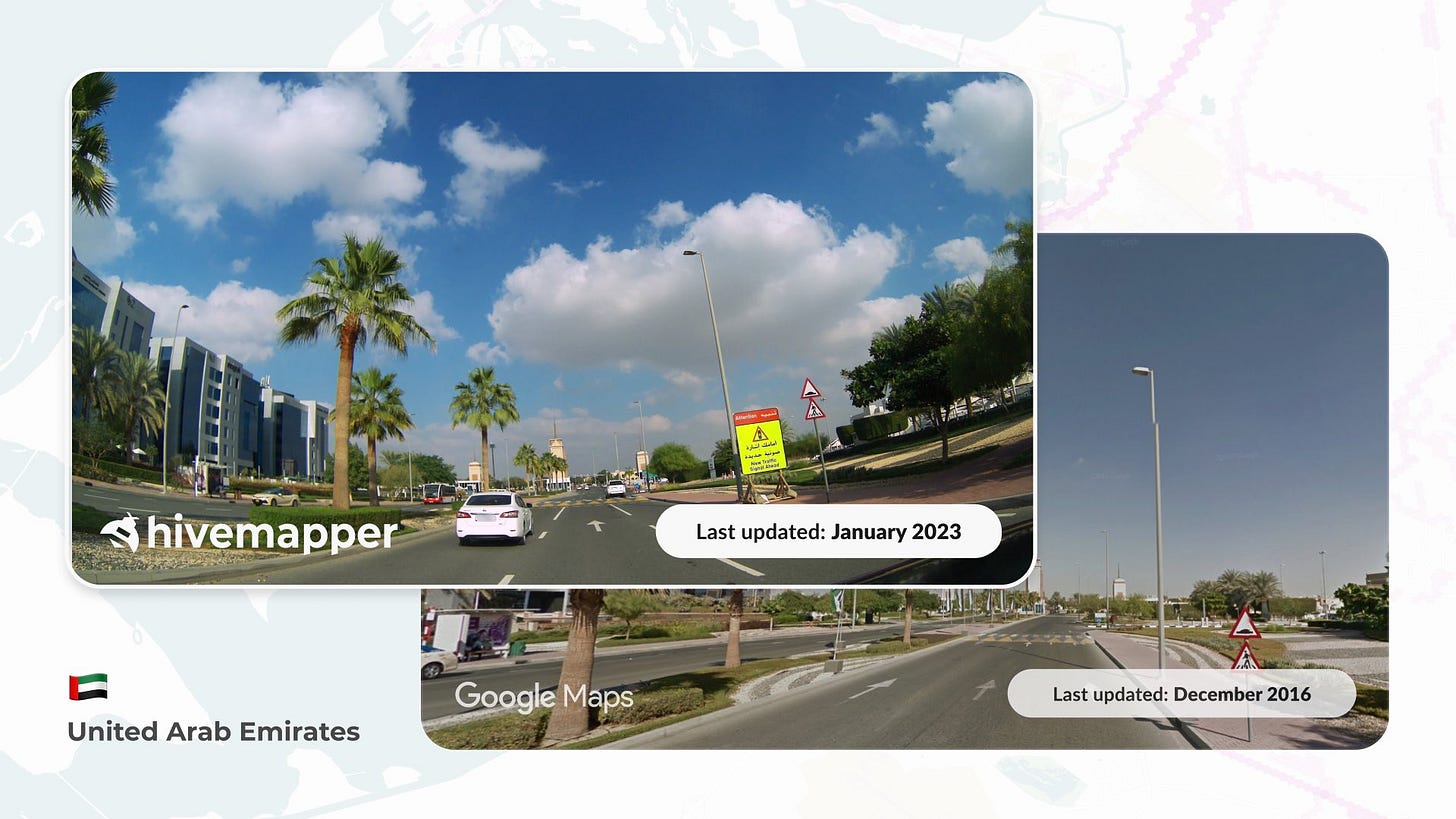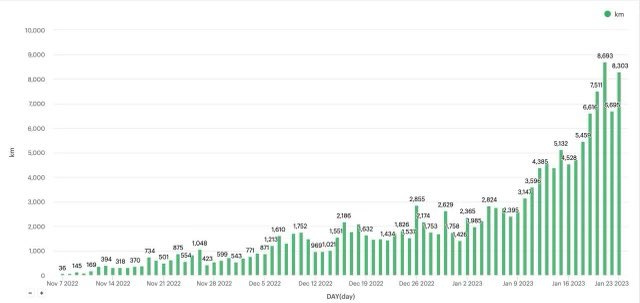Since the earliest days of human civilization, maps have played a crucial role in shaping our understanding of the world. From the hand-drawn maps of ancient Greece and Rome to the innovative advancements of medieval cartographers, mapping has been a constant source of exploration. Today, billions of people rely on maps … Plotting shipping routes, navigating through bustling city streets, location-based services, and more, all require geographic information systems. Companies across industries like logistics, real estate, and governments depend on this $300 billion industry to achieve business objectives.
Imagine for a second that you don’t use Google Maps. Whether you know it or not you are still using Google Maps … You go to Uber, Lyft, Airbnb, Yelp, Trip Advisor, and a bunch of other apps that are all paying to use Google Maps API. For context, Uber paid Google Maps $58 million over 3 years for their map services.
Currently, the mapping infrastructure that billions rely on is monopolized by big tech, with Google Maps controlling 80% of the market. Millions of enterprise customers pay Google for mapping services, however, the downside to this monopoly is that maps are severely outdated. For example, every Google or Apple Maps street photo was taken by an employee in a specialized car with a 3D camera. These photos are often several years old. The cost of each car and employee is too high for Google and Apple to justify frequent updates. As a result, individuals, companies, and governments are left relying on archaic maps for logistics and business operations. How can this problem be solved?
HiveMapper
Enter Hivemapper, a map built by drivers using dashcams, which could very well represent a fundamental shift in how maps are built. Backed by Multicoin Capital in 2022, Hivemapper aims to build better maps faster by enabling anyone with a car to contribute. Instead of paying money for special cars and employees to build out these maps, why not just incentivize individual drivers to build out these maps themselves? As Ariel Siedman, the Founder of Hivemapper states, “hundreds of millions of people drive every day, imagine if just 1% of the people mapped the roads around them as they drove.” This would result in maps that are up-to-date, clear, and accurate.
Building a map globally is incentivized via Hivemapper’s native token HONEY. Drivers start by purchasing a dashcam that they install in their car. As they go about their daily commutes, they capture street 4k street-level imagery using their dashcam. App-editors then process the captured data, carry out quality assurance, and annotate contributor imagery. As a result, both drivers and editors are rewarded with HONEY tokens. This system exemplifies Multicoin’s Proof of Physical work thesis, utilizing token incentives to build real-world infrastructure.
This could mark a revolutionary shift in the development of sophisticated mapping networks. Hivemapper eliminates the need for capital expenditures on costly mapping vehicles (which can cost up to $1 million each) and the associated expenses of paying drivers. Instead, the company can just identify the regions that need to be mapped and put bounties on them. As a result, hundreds of drivers with dashcams who want to claim those rewards simply drive their daily commutes. The incentive mechanism works whether you’re in London, Lagos, or Los Angeles. Great coverage is created in a much more cost-effective manner. Hivemapper’s implementation of decentralized mapping will result in a censorship-resistant and democratic map that continuously evolves. Those who contribute will have a stake in the value of the network.
While this may seem like an interesting alternative to personal Google Maps, Hivemapper is not targeting individual consumers. They are going after the big boys. Uber, Airbnb, Yelp, TripAdvisor, Ford, and millions of others - companies that pay Google Maps billions per year for access to their API. Google Maps is more than just navigation; it is also used for real estate, travel, emergency response, work orders for utility crews, and more.
Hivemapper launched its network on November 3rd. Akin to other decentralized physical infrastructure plays, Hivemapper enables a real opportunity to dramatically improve an archaic industry.
HONEY Token
The native token for Hivemapper, HONEY, is designed to serve the needs of two primary parties in the Hivemapper ecosystem: The map data contributors, and the enterprises and developers consuming data from the Hivemapper network. Similar to how HNT tokens are earned via a variety within the Helium Network, so are HONEY tokens within Hivemapper. There are three primary dimensions by which map consumers’ value maps - Coverage, Freshness, and Quality. The amount of HONEY contributors earn is then calculated accordingly. Drivers are rewarded for helping to achieve complete coverage and helping the map stay fresh. A fresh map is important as customers want maps that reflect the current reality of the world. The mapping data from contributors must be of high quality to be useful to customers. The quality of each driver’s photos dictates rewards. You can earn HONEY via map coverage, map coverage quality assurance, map annotation, and map processing and validation.
Every week the Hivemapper team runs a rewards payout minted from a pool of 4 billion Honey tokens. The team then splits the HONEY rewards between regions. Dividing the rewards depends on the size of the region, the utility, density, rollout strategy, and the number of contributors. The global progress of the map each week determines how fast rewards are paid out to contributors.
Roadmap & Traction
After launching in November with over 5,500 dashcam preorders, Hivemapper drivers started mapping. Within a month, the network had 295 contributors, which has accelerated to more than 5,816 cameras since January of this year. Using token incentives, Hivemapper has mapped 200,000 KM in 3 months. What’s quite interesting is how daily unique km mapped has accelerated over time. Of the 200,000 kilometers mapped so far, the first 100,000 kilometers took 75 days to complete, while the following 100,000 kilometers were completed in just 17 days.
The graph depicts the number of unique km mapped daily since November. The network has gone from 36 km daily at the beginning of November to ~7-8000 km every day. Imagine where these numbers will be 6 months from now. Time will tell. So far the Network has had a terrific start.
The Hivemapper team aims to map the entire planet with 1 million vehicles, approximately 0.07% of the total number of vehicles globally. If contributing to the network remains lucrative for drivers, they could likely reach that goal. However, similar to other DePin networks such as Helium, incentivizing individual contributions while reward schedules are unpredictable remains a challenge. Nevertheless, if Hivemapper can deliver a high-quality map that exceeds the offerings of Google and Apple, they could attract some of their enterprise customers.
Moving Forward
Hivemapper truly represents a revolutionary shift in the development of mapping technology. By incentivizing drivers to capture street-level imagery using dashcams, Hivemapper can build better and more up-to-date maps in a more cost-effective manner. The network's native token, HONEY, serves the needs of both contributors and enterprises, with rewards calculated based on coverage, freshness, and quality of the mapping data. Hivemapper's decentralized approach presents an opportunity to dramatically improve an industry that has been monopolized by big tech, while also providing a censorship-resistant and democratic map that continuously evolves. The company's launch in November 2022 signals a new era in mapping technology and holds great potential for the future.



